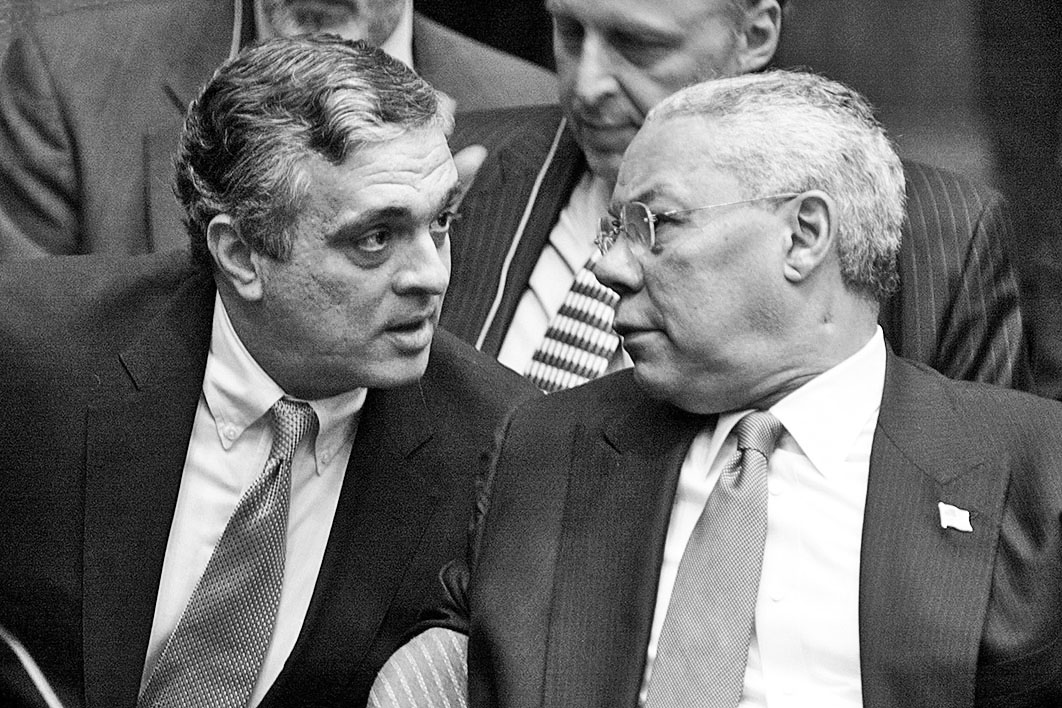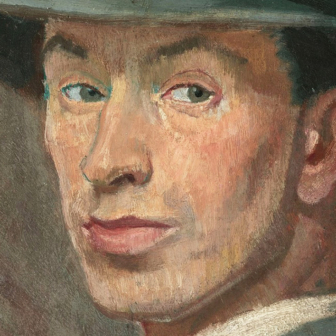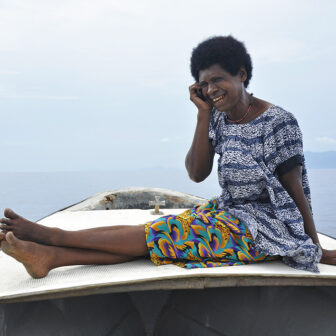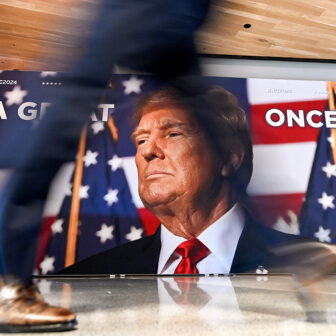The Life of a Spy: An Education in Truth, Lies and Power
By Rod Barton | Black Inc. | 32.99 | 304 pages
At a time when Australia is recognising the value of teaching schoolchildren STEM subjects — science, technology, engineering and maths — former intelligence agent Rod Barton demonstrates one of the more exotic career choices available to science and engineering nerds.
The son of an industrial chemist from northern England who brought his family to Australia in 1957, Barton was raised in the working-class Adelaide suburb of Elizabeth and gained degrees in microbiology and biochemistry from the University of Adelaide. But what to do with this classic STEM education?
A vaguely worded advertisement he spotted in the government gazette in 1972 sought a junior scientist for the Department of Defence. He applied, and the job turned out to be an analyst position with Australia’s intelligence assessment agency, the Joint Intelligence Organisation.
Hired by the JIO’s Defence Science and Technical Intelligence directorate, and shuffled into the arcane field of Middle Eastern nuclear chemical and biological weaponry, Barton went on to spend thirty-plus years as an Australian intelligence analyst and assessment officer. His scientific and technical skills, plus some training in spycraft, led him from Canberra to London, Somalia and, ultimately, Iraq, where he found himself in the vortex of the biggest intelligence controversy of our time: the search for Saddam Hussein’s weapons of mass destruction.
When Saddam invaded Kuwait in 1990, Barton was acting director of intelligence analysis at the Defence Intelligence Organisation. It was his job to brief prime minister Bob Hawke about the risks — chemical, nuclear and biological — facing Australia’s naval vessels supporting the US-led coalition in what we now call the first Gulf war.
“I told him that we knew what kind of chemical agents and weapons Iraq had, and what the [Australian ships] might expect to face in the Gulf region,” writes Barton. “As for nuclear weapons I assured him that Iraq was a decade away, and probably more, from developing a bomb. We had little intelligence on Iraqi biological weapons, and although I thought the threat was low, I believed it would be prudent for our forces to be prepared. He nodded and seemed satisfied with this. Perhaps if he had learned what I discovered later, he would have felt differently.”
These “later” discoveries came through Barton’s intensive work as a weapons inspector in Iraq, where he was a member of the UN inspection teams, UNSCOM and UNMOVIC, under Swedish diplomats Rolf Ekéus and, in the lead-up to the second Gulf war, Hans Blix. Separately, he was attached to GATEWAY, a CIA-run operation to gather intelligence alongside, and about, the UN inspectors. He later joined the CIA-led Iraq Survey Group as special adviser first to David Kay and then to Charles Duelfer.
As recounted by Barton, the life of a weapons inspector involves dangerous field assignments, frustrating interrogations of uncooperative Iraqi scientists and military leaders, jigsaw-like puzzling through caches of seized documents, detailed tracing of the movement of potentially lethal chemicals, and a delicate balancing of international political and intelligence interests. Barton entered smouldering warehouses and bunkers containing stockpiles of unknown chemicals and live munitions, seized documents that revealed sophisticated Iraqi weapons programs, and prepared reports for the UN Security Council.
It is exciting stuff. Barton writes in an easy conversational style with plenty of anecdotes, and he negotiates many of the more confidential passages with the use of false names, nicknames, first names or, sometimes, simply no names at all.
One seized document he studied demonstrated that as early as May 1990 — seven months before the first Gulf war — Iraqi scientists had put that country “on the brink” of making a nuclear bomb. Having briefed Hawke that an Iraqi bomb was at least a decade away, Barton has spent troubled nights wondering if this much more threatening knowledge would have changed Australia’s calculations about the merits of sending those ships to the Gulf in 1991.
The Hawke briefing aside, there is little in this account of what any of the revelations about Iraqi weaponry may have meant for Australian decision-making as part of US president George W. Bush’s “coalition of the willing.” That story is better told in more analytical and comprehensive accounts elsewhere.
Instead, Barton’s target lies elsewhere. A consistent thread through the weave of his narrative is its severe indictment of the intelligence performance of our closest ally. He writes to make a point, to demonstrate how the CIA’s intelligence capacity was distorted by its excessive responsiveness to political pressure.
Barton’s first confidence-shaking experience of CIA intelligence occurred early in his career. In mid 1981 reports emerged from Laos and Cambodia of sickness caused by “yellow rain.” CIA analysis pointed to a chemical agent the Soviet Union was supplying to its Vietnamese allies, leading then US secretary of state Alexander Haig to accuse the Soviets of chemical warfare. For the Australian investigators, though, led by Barton, the data didn’t add up: sickness reports were inconsistent and didn’t tally with the fungal-borne mycotoxins the CIA had identified in the samples.
In their report at the time, Barton and a colleague “concluded that there had been no chemical warfare in Indochina. The CIA had gotten it dead wrong.” Barton explains: “Bees often defecate in swarms, and their faeces falls to the ground in sticky droplets like rain. Since a food source for bees is pollen, their droppings are yellow. What the CIA had actually collected was dried bee poo, some of which had become mouldy, perhaps in transit, and so was contaminated with tiny amounts of toxin.”
Barton attributes the intelligence error to political influence — in other words, the analysis was shaped to fit the political conclusions that had already been announced. He was also shocked by the CIA’s response to his report: a personal letter went to the head of JIO questioning Barton’s analysis and accusing him of “perverse and mischievous” behaviour. The insult clearly rankles with him to this day.
In Iraq, as the drums of war were beating ever more loudly, the CIA was under ever greater pressure to find what it had been told to look for. Indeed, George W. Bush and his secretary of state, Colin Powell, had declared not only that Iraq’s weapons of mass destruction existed but also that they posed an existential threat. Barton, by contrast, had become convinced that the Iraqis had destroyed most of their weapons of mass destruction, and that whatever remained was likely to have passed its use-by date — in other words, that the Iraqi program posed no continuing threat.
Yet the United States and Britain accused Iraq of possessing capabilities that the UN inspectors under Blix — and, Barton suspected, the Iraqis themselves — had no knowledge of. Even more emphatically, at the Iraq Survey Group, “everything was premised on the belief that there were hidden weapons out there, and all they had to do was find them.”
This dilemma led the ISG’s first director, the highly regarded David Kay, to walk away. When his successor, Charles Duelfer, was introduced to staff in an excruciating scene witnessed by Barton, CIA director George Tenet bluntly asserted, “Iraq has hidden weapons out there, and it’s your job to find them!” Barton, remembering the saga of the bee poo, concluded: “Politics was once again taking precedence over intelligence findings.”
So it turned out. The intelligence was wrong. There were no weapons of mass destruction — or none any longer. “It was the politicians who made the decision to go to war, but it was the massive failure of CIA intelligence that facilitated it,” writes Barton. “In my view the CIA was as culpable as their political masters.” This lesson alone is worth the price of the book.
Barton writes as probably the best-informed Australian on the subject of Iraqi weapons development. His only rival for the title would be diplomat Richard Butler, who followed Ekéus as head of UNSCOM; but though Barton’s involvement was at a lower level, it was for a longer period and arguably gave him more on-the-ground knowledge. Curiously, Barton doesn’t mention Butler at any point.
Even so, it is not entirely clear how an intelligence agent who held senior positions in the Australian system and operated in elite international networks is able to write any sort of memoir. To be fair, much of his account deals with his service with the United Nations, in Mogadishu as well as Iraq, when by definition his activities and reports were ultimately public. But he was employed by Australian intelligence for most of the time and he is still bound, as he acknowledges, by the Official Secrets Act.
Bob Hawke’s 1994 memoir, for example, is much more circumspect about the intelligence briefings he received at this time. Though Barton’s story doesn’t show Hawke in a negative light, I suspect the late prime minister would hardly have approved of discussion of his highly confidential briefings. And for what it’s worth, I doubt that a more accurate representation of the Iraqi nuclear threat would have deterred Hawke, who was determined not to appease an aggressor. •




